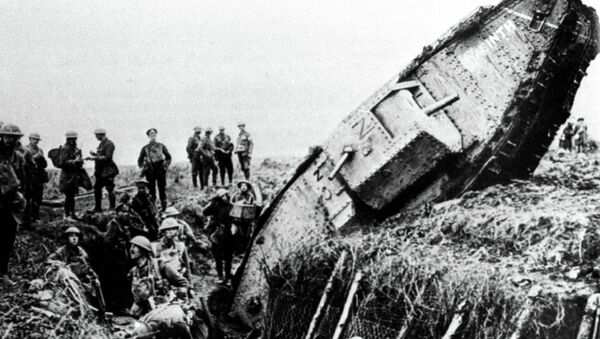Just nine months after the appearance of the first British and French tanks on the battlefields of World War I - relatively lightly armored and designed to protect crews only against small-arms fire – Germany rose to the challenge and gave its infantry a man-portable anti-tank weapon.
It's #throwbackthursday! What do you do if you're a German soldier stuck in the trenches in #WWI and you see a British tank rolling your way? Simple: Bring more gun with the Mauser M1918 Tankgewehr.
— Shooting Illustrated (@ShootingIllustr) September 6, 2018
What's your vote for the coolest anti-tank #rifle of the 20th century? pic.twitter.com/V88qS1tPKN
Munitions manufacturer Waffenfabrik Mauser AG came up with what is credited as the first antitank rifle in 1917: the Mauser 13.2mm Tank Abwehr Gewehr Model 18, known simply as the Tankgewehr. Mass production was launched at Oberndorf am Neckar in May 1918.
An upscaled bolt-action rifle based on the Mauser action, it was a single-shot weapon that required manual loading each tip, and sported a pistol grip and bipod.
The rifle also had a brutal recoil, so that shooting multiple rounds was quite a feat.
1/ Canadian soldiers are seen here examining a #Tankgewehr, a German anti-tank rifle deployed at the front in 1918. The rifle, operated in pairs, is enormous. It was nearly 1.7m long, weighed approximately 18kg and fired a 13.2mm cartridge. pic.twitter.com/tSkQZeoPRE
— CCGW/CCGG (@GreatWarCentre) March 17, 2020
The rifle was developed initially as a stopgap measure, writes Michigan-based writer Peter Suciu for The National Interest.
Originally, a dual-purpose machine gun had been planned, chambered for the TuF cartridge, to be used against tanks and aircraft.
However, swift action required something that would be less complicated to produce and deploy, hence the far simpler bolt-action weapon.
The only anti-tank rifle to experience combat action in World War I, some 15,800 of these were produced by the end of the war. Under a design tailor-made to defeat armor that offered just 12mm of protection at that time by simple penetration, they were issued to the frontline in January 1918.
With an effective range of about 500 meters, the massive anti-tank weapon was chambered to fire a .525-cablier jacketed, armor-piercing, steel-core cartridge.
The weapon was ultimately capable of disabling internal components of the tank such as the engine, other systems, and the crew.
Each regiment received from two to three of the T-Gewehrs.
25 August 1918, Grévillers area. New Zealanders posing with world's first anti-tank rifle, German "Tankgewehr M1918". #WW1 #HISTORY pic.twitter.com/1oLgV9XYDM
— RG Poulussen (@rgpoulussen) November 5, 2019
Each rifle was operated by a two-man gun crew, where one was the primary gunner and would carry the rifle, together with its specially designed TuF rounds, while the other would be responsible for the two shoulder bags with twenty rounds in each, and an ammunition box.
The upscaled rifle was quite good at stopping enemy tanks, but by the end of 1918, after Germany had surrendered, the T-Gewehr fell into oblivion.
French civilians pose with a German Tankgewehr M1918 captured by the British pic.twitter.com/pIq85YscZP
— 08/15 (@88I15) February 4, 2020
Despite subsequent attempts to emulate this feat, and create a rifle able to take out a tank, none came close to the success of the T-Gewehr.


